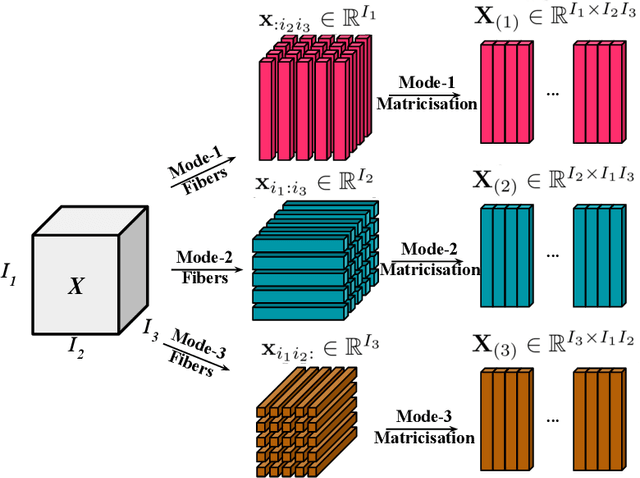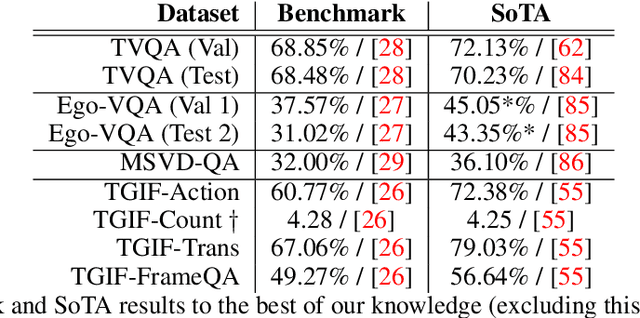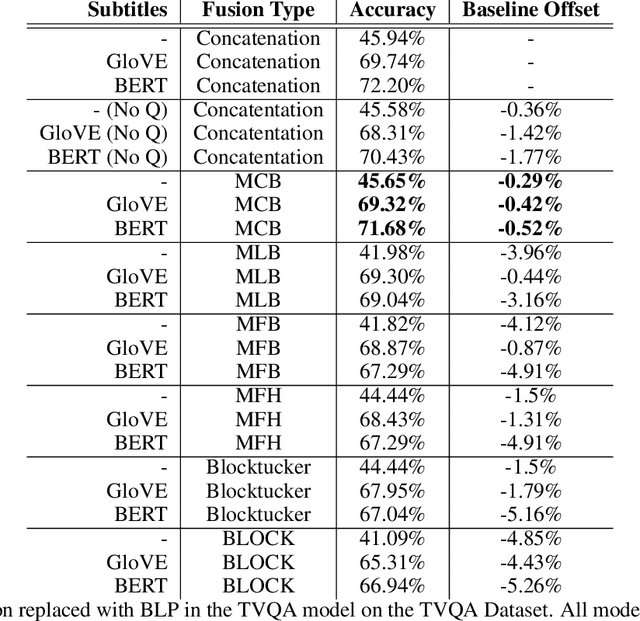Trying Bilinear Pooling in Video-QA
Paper and Code
Dec 18, 2020



Bilinear pooling (BLP) refers to a family of operations recently developed for fusing features from different modalities predominantly developed for VQA models. A bilinear (outer-product) expansion is thought to encourage models to learn interactions between two feature spaces and has experimentally outperformed `simpler' vector operations (concatenation and element-wise-addition/multiplication) on VQA benchmarks. Successive BLP techniques have yielded higher performance with lower computational expense and are often implemented alongside attention mechanisms. However, despite significant progress in VQA, BLP methods have not been widely applied to more recently explored video question answering (video-QA) tasks. In this paper, we begin to bridge this research gap by applying BLP techniques to various video-QA benchmarks, namely: TVQA, TGIF-QA, Ego-VQA and MSVD-QA. We share our results on the TVQA baseline model, and the recently proposed heterogeneous-memory-enchanced multimodal attention (HME) model. Our experiments include both simply replacing feature concatenation in the existing models with BLP, and a modified version of the TVQA baseline to accommodate BLP we name the `dual-stream' model. We find that our relatively simple integration of BLP does not increase, and mostly harms, performance on these video-QA benchmarks. Using recently proposed theoretical multimodal fusion taxonomies, we offer insight into why BLP-driven performance gain for video-QA benchmarks may be more difficult to achieve than in earlier VQA models. We suggest a few additional `best-practices' to consider when applying BLP to video-QA. We stress that video-QA models should carefully consider where the complex representational potential from BLP is actually needed to avoid computational expense on `redundant' fusion.
 Add to Chrome
Add to Chrome Add to Firefox
Add to Firefox Add to Edge
Add to Edge